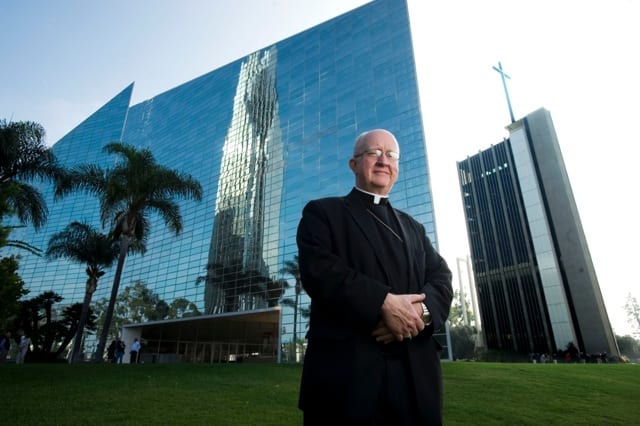On July 17, Southern California’s famed Crystal Cathedral will be dedicated as Christ Cathedral, the new seat of the Diocese of Orange.
Once the home of evangelical pastor Robert Schuller of the Reformed Church in America and his famed “Hour of Power,” the building, which is made of more than 10,000 panes of glass, was purchased by the diocese of Orange in 2012 after Schuller’s ministry went bankrupt.
Since that time, the building - and its campus - has undergone a complete transformation, physically and canonically, to become a space fitting for Catholic worship.
Ahead of its dedication, Bishop Kevin Vann spoke with Crux to chronicle the process, discuss why he believes beauty can help save the world and what he hopes that Cathedral will represent for Catholics in southern California.
Crux: Let’s start with a very basic question: How does one go about converting a former Protestant church into a Catholic Cathedral?
Vann: This is like a final exam for me! I would say it was accomplished above all with the help of God in several areas.
Number one, you take the architectural and liturgical part of it and figure out how you put that into a building that was made for evangelicals and make that kind of change.
Then, there is a second part: We had the Holy Family Cathedral in Orange, so we had to figure out how to help the folks at that place transition to a new status and how do you help the folks here on the new cathedral campus grow into a cathedral parish.
Thirdly, there’s the canonical part, where it has to be decreed to be a cathedral, so you have to write the Congregation for Bishops in Rome for that permission and show that you’ve prepared the folks in the former cathedral for their change in status.
You’ve traveled to Italy to help hand pick the marble. The building is designed so that the sunlight plays a major role in creating the right environment inside the space, and the organ is the fifth largest in the world. What role do you believe beauty serves in drawing people to the faith?
Beauty draws people to God in ways that intellectually don’t happen as much, or at least don’t happen quite the same way. When you look up and see the light coming in, especially in the afternoon, that draws you upward to God.
I’ve traveled to Italy three times to make sure the stone was being cut right and that it was the right kind. The beauty of the stone and the marble work really speaks to creation and the power of God, so it draws people to that.
Beauty helps us find the presence of God in ways that we couldn’t intellectually, so the light, the stone work, the mosaics, the crosses, all of it helps draw us out of where we are now and toward God.
Some critics will say in an age where the Church should be focusing its attention on regaining its credibility in the public square or heeding Pope Francis’s call for a “poor Church for the poor,” now isn’t the time to be focusing on real estate. What’s your response to that charge?
I would say that the Catholic lens is not either/or, it’s both/and.
For example, when it comes to taking care of the poor, maybe you’ll recall the fundraiser event we held with [Crux editor] John Allen a few years ago where we held a fundraiser for victims of the earthquake in Italy. Or take [local chef and philanthropist] Bruno Serato who helps a lot of poor families and children in Anaheim, whose restaurant burned. I gave him one of the kitchens on the campus to keep that ministry going until he rebuilt his restaurant.
If beauty can reignite one’s faith and draw us closer to God, then these things can help us respond to the other challenges of today.
Southern California has been hit by a string of recent earthquakes. Does that make you nervous for the structure?
I grew up in the Midwest, so I tell people I traded tornadoes for earthquakes!
I was out during both of the recent ones and we really felt them, but that’s part of life here. Part of the work of the campus was to seismically retrofit everything so it can withstand these things. I think we’ve done everything we can and there’s been no damage here.
The dedication is the 17th but it won’t be fully functioning until February 2020. What’s going to take place between now and then?
Much of it will have to do with the tuning of the Hazel Wright organ. The acoustics are going to be very different than what it was before, so it’s been completely redone and restored. During the week it will be tuned, but the Cathedral will be available on weekends for Mass. We’ll just have a digital organ until it’s ready.
What do you want the cathedral to represent for Catholics in the diocese of Orange?
I would hope that when people see that steeple they will think, “God is here!’ and he’s drawing us toward himself and one another through the ministry and presence of Christ Cathedral, and the presence of God is growing.
I would have never imagined this. I walk across the campus and my mind and my heart goes back to my mother and my father and our parish church where it all kind of started for me, and here I am now, and I’m grateful God’s providence have brought us all together here.

